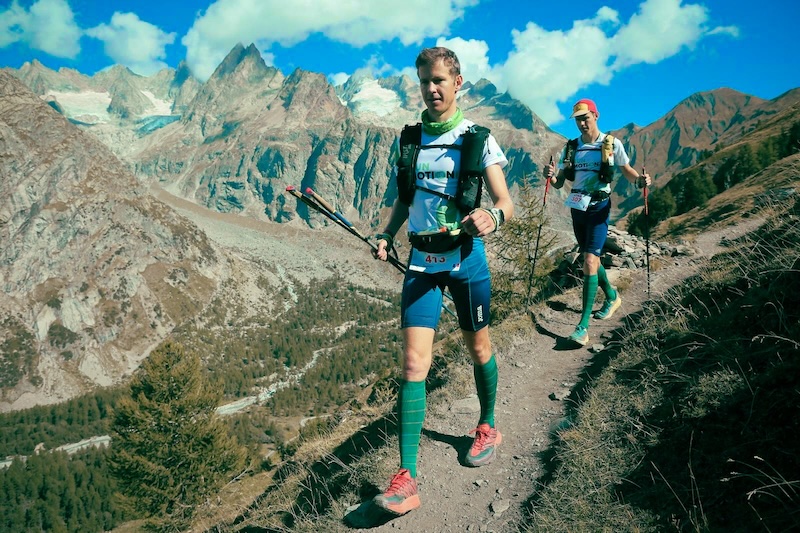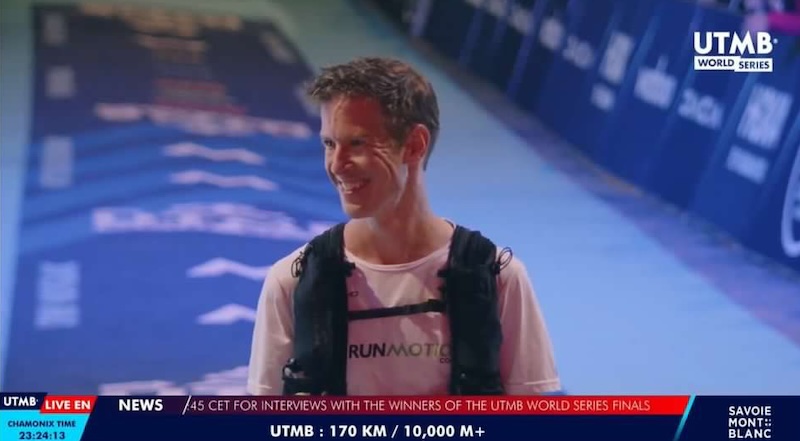
You have just discovered trail running and you already dream of wearing a bib on the UTMB or the Diagonale des Fous? These extraordinary adventures are captivating. The emotional finishers’ videos, the feats of the greatest champions, the breathtaking panoramas, the 100-mile trails… it sure makes you want to experience it. But behind the dream, there is a harsh reality: one does not become an ultra-trailer overnight.
In this article, I will share with you concrete and applicable advice to increase distances in trail running without getting injured, neither physically, nor mentally. A reasoned progression plan, based on experience, so that you savor each step and stay motivated in the long term.
Contents
The trap of the UTMB dream: a finish line… but at what cost?
We see it more and more: runners sign up for a 100 km UTMB World Series in their first year of trail running. Why? To win a precious Running Stone and have a chance to run the UTMB the following year.
The problem is that some manage to finish… but most fail, sometimes heavily. Injuries, drops, demotivation. An ultra is not just a longer race. It is an extraordinary effort that requires patience, humility, and above all, experience.
So before aiming for the ultra, you must ask yourself a crucial question: have I really laid the foundations?
Progressiveness to increase distances in trail running: the key to endurance
If you want to go far in trail running, you need to build a solid base. You don’t build a house without foundations. The body – like the mind – needs time to adapt to the constraints of long distances and elevation gain.
Progressiveness is a key factor for success in trail running. By respecting the steps, you significantly reduce the risk of injury and gradually increase your resistance, being better prepared to face the unexpected.
Step 1: mastering the 20 to 40 km formats
Are you a beginner or coming from road running? Start with short to medium trails, between 20 and 40 km. Vary the terrains: rolling, technical, in the mountains. It’s during this stage that you learn to manage your effort uphill, to descend without blowing up your quads, to fuel properly.
You will also discover the basics of trail equipment: pack, hydration flasks, poles, appropriate shoes, nutrition,… So many elements to familiarize yourself with and validate on a 40 km trail before thinking about exceeding the 50 km mark.
Step 2: tackling the 80 to 120 km formats
Once comfortable with intermediate distances, you can consider moving on to long trails. Events like Les Templiers, the 90 km du Mont-Blanc, the CCC, or SaintéLyon are demanding but accessible with good preparation.
This is where you test night management, long sections in autonomy, weather variations. You learn to listen to your body, manage energy slumps. These races are an essential step before aiming for larger goals.
Step 3: aiming for ultra beyond 120 km
If you have taken the time to progress, if your body copes well, and you feel ready, then you can consider tackling an ultra of more than 120 km. UTMB, Diagonale, Échappée Belle… These are formats of extreme endurance, reserved for experienced runners.
You must have validated all previous steps and not make UTMB an obsession. It is not an end in itself, but a milestone among others, rewarding your progress.
In summary, I recommend 2 years on each level. If you want to go faster, respect at least 1 year to validate the 20-40 km formats, then 1 year on the 80-120 km formats.

My mistakes, my lessons: the experience of a hurried trailer
I speak from experience. Having started trail running in 2018, I quickly moved on to longer and longer distances in 2019. The MCC, the 6000D… And on the 6000D, I told myself: “Come on, give it your all in the final descent” when I had already done 3000m of negative elevation gain. Bad idea. Knee injury. I finished walking, frustrated.
In 2021, I successfully completed the CCC (100km of the UTMB, 6000D+). Then I tried the XXL Race, a 110 km over two days, with a midnight start. Ideal format to learn distance management. But right from the start, my headlamp died. A simple gear mistake, and I found myself running in the dark… Fortunately, a friend I randomly met on the course was able to lend me his spare headlamp…
The following year, I registered for the UTMB (170km, 10,000D+). I held on until km 130, then I dropped out. That knee again. I had skipped a step: I should have done a 120-130 km race that year to prepare for it.
But these mistakes served me well. In 2023, I came back better prepared. I finished the UTMB in less than 30 hours, in the top 150. And I did it with a smile (okay, with some suffering too), without any damage. Because this time, I was ready.
PS: I already had over 15 years of experience in running when I started trail running and over 25 trail races under my belt before taking on the UTMB).
Learning at each stage: the trail school
In trail running, each distance teaches you something. On a 40 km, you can eat poorly or mismanage your effort and still finish. On a 100 miles, the slightest mistake can cost you the race.
You must learn to:
- Manage your nutrition and hydration over time
- Avoid overheating and getting too cold
- Choose your gear carefully (headlamp, pack, shoes…)
- Listen to your body, anticipate warning signs
Personally, my weakness was muscle fatigue. So I strengthened my general physical preparation, added hill work and specific strengthening. This allowed me to better handle long descents.
Nutrition also requires work. Some people digest gels poorly, others lack salt. You have to test during training, in real conditions, to avoid unpleasant surprises on race day.
Don’t skip steps, savor them!
Trail running is a school of patience. And if you want to last in this sport, the journey must be as important as the destination. There will be highs, lows, maybe injuries, but also magical moments. Sunrise on a ridge, exhilarating descents, unforgettable encounters.
The important thing is not just finishing the UTMB or the Diagonale des Fous. It’s everything you’ve built to get there.
And don’t forget, there are not only these 2 trail monuments. Our territories are full of magnificent trails, worth a visit. They will allow you to experience exceptional moments and learn more about yourself.
So, what’s your trail dream?
And you, on which distance do you feel comfortable today? Which race is your dream?
If you want help structuring your progression, avoiding common mistakes, and training intelligently, discover RunMotion Coach, the official coaching app of the UTMB World Series and over 30 partner trails (SaintéLyon, Les Templiers, Marathon du Mont-Blanc, L’Ultra Marin,…).
With RunMotion Coach, you receive a personalized training plan adapted to your level, schedule, and goals. Download the app and start your plan today. Your adventure starts now.